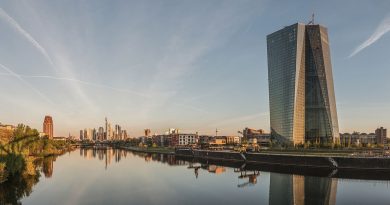The Arab Spring One Decade Later
Madeline Field
Staff Writer
In 2020, 26 journalists were imprisoned by the Egyptian government, the Committee to Protect Journalists reports. This past November, a prominent women’s rights activist was executed in broad-daylight in Benghazi, Libya, one of many targeted that year, Human Rights Watch adds. Just this month, a protestor was killed after Tunisian police, who were cracking down on protesters demanding social justice, fired tear gas.
While violence and repression are not uncommon in the Middle East and North Africa, these incidents stand in stark contrast to the events that transpired one decade ago during the Arab Spring, a series of widespread anti-government revolts. The revolution called for democracy, among other significant changes. Yet it seems that in the years since, little has changed.
The Arab Spring began on December 18, 2010 with the self-immolation of a Tunisian fruit vendor, Mohamed Bouazizi, The Washington Post explains. Bouazizi was targeted by local police for vending without a permit; physical altercation with a local police officer that day resulted in the confiscation of his electronic sales and, soon thereafter, Bouazizi killed himself outside the local governor’s office.
Massive protests began in Egypt, Libya, and Syria, and smaller-scale protests in Iran, Yemen, and Bahrain followed. They called for a variety of sweeping reforms, including improved economic opportunities, decreased corruption and misuse of public resources, and increased equality. By late 2013, however, tyranny was once again widespread in the region – with the notable exception of Tunisia and its election of a semi-democratic leader.
Egypt, despite electing a popular Islamic leader, fell into the hands of a military dictatorship under the leadership of General Abdel Fattah Al-Sisi, while civil war broke out in Syria. While many factors led to the eventual collapse of the Arab Spring, the broad and deep-seated social and religious differences that separated the political factions rendered revolutionaries incapable of consensus. And thus, two years after the Arab Spring ended, the historical wide-scale dissent ended with it.
Despite government repression, protest movements have resurged in the last two years. Demonstrations in Tunisia, the birthplace of the Arab Spring, have intensified since COVID-19 started to spread and continued throughout the pandemic, Foreign Policy reports. The promises of democracy, contrasted with the realities of corruption, public safety net strains, and youth unemployment have compelled thousands of teenagers and adults to partake in violent protests against state forces.
Furthermore, COVID-19 has intensified discontent in the region. The realities of harsh lockdowns have left local economies suffering and challenged the culturally tight-knit families that define the Middle East. Government health messaging is both mystifying and distrusted, leaving often-damaged medical infrastructure battling continuous surges. With mass-vaccination unlikely in poor regions anytime soon, it could be another year of suffering, CNN affirms.
As protests across the region continue, opinions on a widespread “Arab Spring 2.0” remain varied. Lina Khatib, an analysist heading the Middle East and North African (MENA) program at the London-based international affairs think-tank Chatham House, notes that despite the difficulties associated with the repressive regimes governing MENA, “future grievances” will “ultimately force citizens to seek political change,” The Washington Post adds.
In sharp contrast stand those who experienced first-hand the difficulties of revolution. Esraa Eltaweel, an activist who was paralyzed and subsequently detained as a political prisoner while protesting in Cairo in 2014, believes that the system is “so rotten it can’t be changed.” Despite the hopes of activists who firmly believed change was possible, little came of their sacrifice.
Rather, it would take a “miracle,” as one 26-year-old Egyptian photographer put it, for revolution to happen again.


